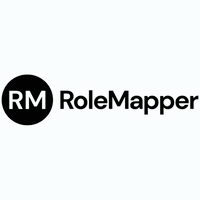The EU Pay Transparency Directive - are you ready?
With the EU Pay Transparency Directive due to enter law across the EU in June 2026, it may seem like plenty of time for organisations to prepare.
The bill will have potentially far-reaching operational implications and will apply to any company with employees in the EU.
Preparing for the directive
Here’s a summary of the roadmap for preparation.
Create flexible job architecture and job groupings
The directive gives employees the right to request information about pay levels for groups of workers who perform what is deemed to be the same work, similar work, or work of equal value as them.
In practical terms, this means organisations need to have a robust framework and mechanism for grouping and analysing jobs.
Organisations must have a way to consolidate and compare jobs of equal value and be able to justify any differences in pay that may exist.
Create a bias-free mechanism to value your jobs
Organisations need an objective and unbiased method of valuing jobs.
The directive recommends using a job evaluation methodology that can systematically value roles based on objective criteria that account for the role’s level of responsibility, the skills and knowledge needed and the complexity of tasks.
There are several job evaluation methods to consider, but the one you use should be based on these objective criteria.
Create equitable pay structures
Pay structures should be linked to the groupings of jobs of equal work and equal value.
As this is not always the case in many businesses, compliance with the directive could mean a major change for some.
We recommend that organisations review current methods for creating pay ranges and their implications as they relate to the directive.
A complete overhaul of how you price your jobs could, potentially, be a daunting task.
For this reason, we recommend creating job groupings aligned to equal work and equal value as a first step, mapping pay data onto this and seeing the extent of your risk in terms of pay equity.
Provide visibility of pay principles
Organisations need to be able to share the criteria they use to define pay levels and make pay decisions, and the methodology behind the pay structure.
This essentially means a higher level of pay transparency is needed.
Organisations need to consider the level of transparency they want, think about the core principles around pay, and how they communicate this to staff.
Share career progression criteria
Employers need to be clear about why pay varies in the company.
They need to be able to explain the criteria for pay progression as well as why current pay for one role may differ from that of another.
To comply with the directive, organisations need to have clear mechanisms in place to:
- Define progression criteria
- Assess progression criteria
- Share pay progression criteria
Bias-free recruitment processes
Organisations must ensure that job titles and job listings are inclusive and gender neutral, and that their recruitment processes are inclusive and not open to bias.
This has several implications:
- Job titling and language must be gender neutral
- Recruitment practices must be inclusive
- Assessment criteria must be inclusive
Create standardised job descriptions
Job descriptions form the foundational building blocks to operationalize many of the requirements.
To ensure that you can prepare for the directive, and be able to carry out ongoing management, you need to have a robust approach to standardising, creating, and governing your job descriptions.
Pay equity analysis and reporting
Every organisation within the EU will need to have a deep understanding of the pay equity situation of their job groupings.
First of all, this requires grouping jobs based on equal work and equal value, according to objective criteria.
Until you know which jobs are of equal value, and therefore in the same group, it will be challenging to run the reporting.
For any organisation who does not have a consolidated view of the value of their work, it is highly recommended that you review your job evaluation so that you have enough time to analyse the pay for each group ahead of June 2026.
Summary
The EU directive is more rigorous than any pay transparency legislation so far, with operational implications across both compensation and talent management processes.
It isn’t just displaying pay bands on job postings, the directive requires companies to consider their compensation and talent management practices.
Download the eight-step guide and learn more about:
- Creating a dynamic job architecture
- Creating pay structures aligned to equal work and value
- Standardising and creating relevant, bias-free job descriptions.
Supplied by REBA Associate Member, RoleMapper
RoleMapper is an AI-powered job data transformation and management platform.








